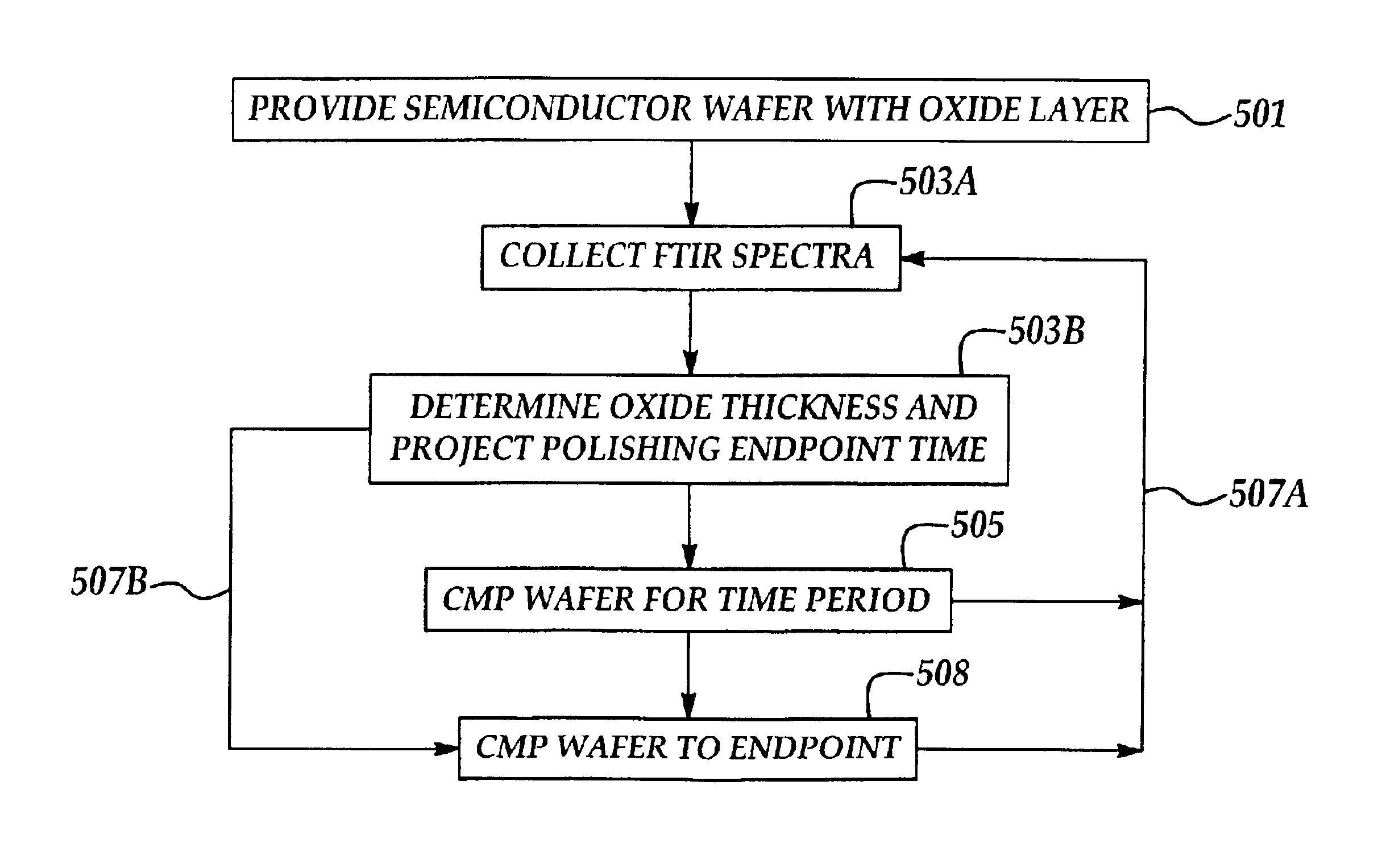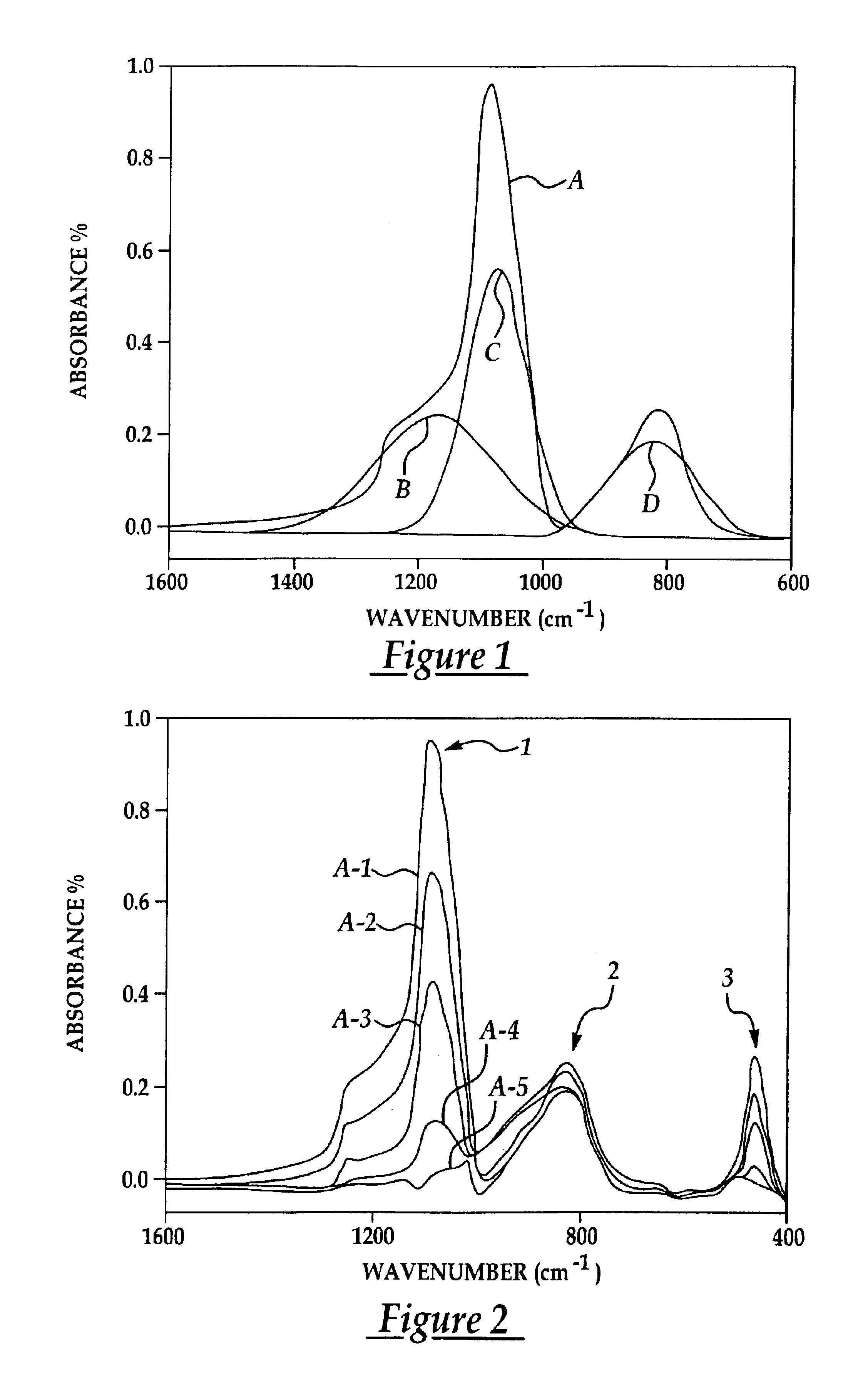Method to measure oxide thickness by FTIR to improve an in-line CMP endpoint determination
a silicon oxide and endpoint measurement technology, applied in the field of metalrology methods for measuring film thickness, can solve the problems of affecting the quality of several, excessive surface non-planarity, and more severe constraints on the degree of planarity,
- Summary
- Abstract
- Description
- Claims
- Application Information
AI Technical Summary
Problems solved by technology
Method used
Image
Examples
Embodiment Construction
[0017]Although the method of the present invention is explained in exemplary implementation for use in a semiconductor wafer CMP process to monitor a thickness or presence of an oxide layer undergoing a CMP process, it will be appreciated that the method of the present invention may be advantageously used to quickly and easily measure the remaining thickness or presence of an oxide layer in any semiconductor manufacturing process.
[0018]In a first embodiment of the present invention a semiconductor wafer process surface having an exposed surface portion is provided. An infrared (IR) source of energy (probe) is directed at the process surface and at least one Fourier Transform Infrared (FT-IR) spectra including a detected signal intensity is collected from at targeted measurement area of the process surface including a predetermined bandwidth of frequencies characteristic of at least one vibrational frequency mode characteristic of material present in the pathway of the IR probe. The ...
PUM
 Login to View More
Login to View More Abstract
Description
Claims
Application Information
 Login to View More
Login to View More - R&D
- Intellectual Property
- Life Sciences
- Materials
- Tech Scout
- Unparalleled Data Quality
- Higher Quality Content
- 60% Fewer Hallucinations
Browse by: Latest US Patents, China's latest patents, Technical Efficacy Thesaurus, Application Domain, Technology Topic, Popular Technical Reports.
© 2025 PatSnap. All rights reserved.Legal|Privacy policy|Modern Slavery Act Transparency Statement|Sitemap|About US| Contact US: help@patsnap.com



